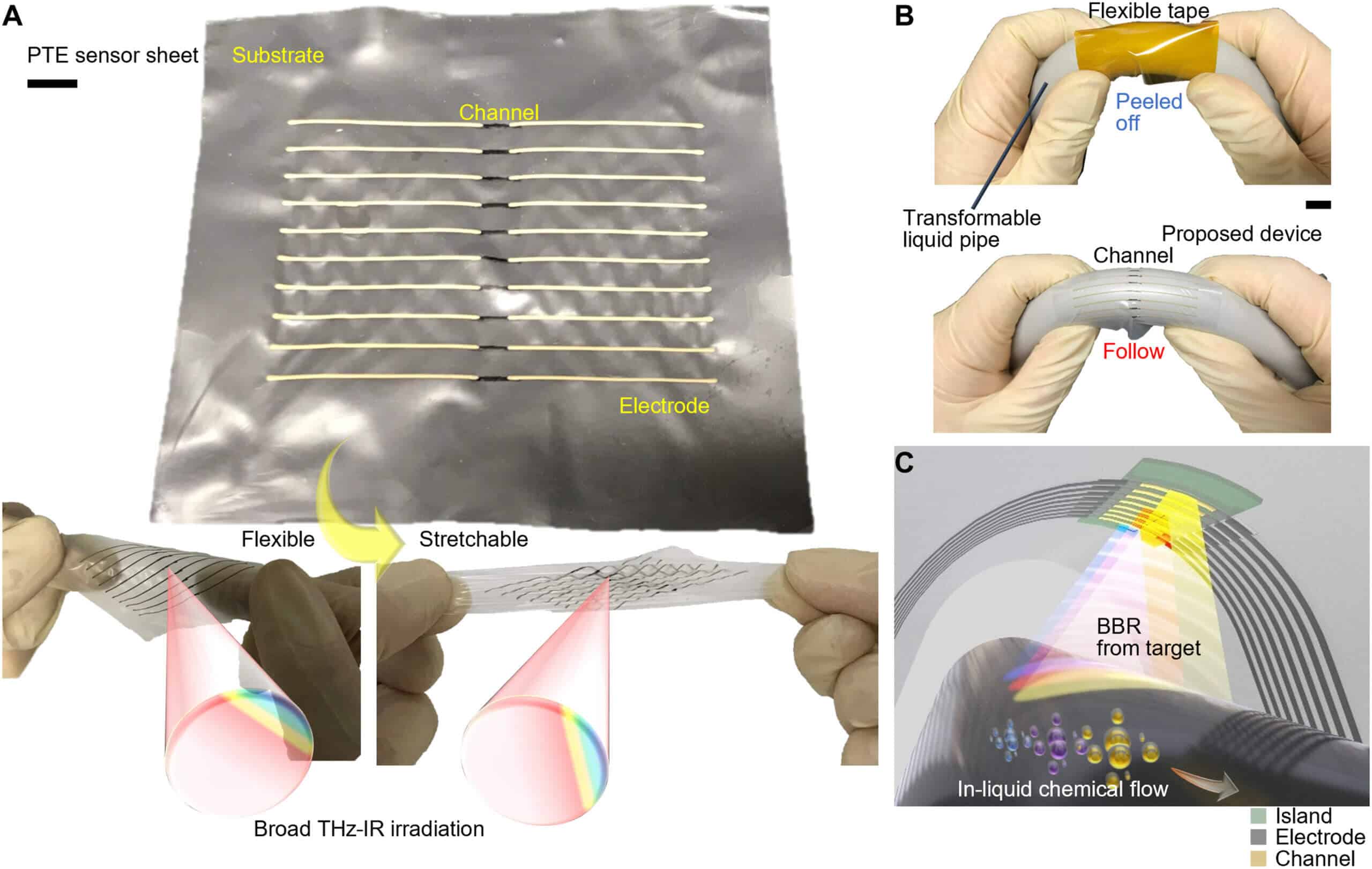Researchers have succeeded in developing a flexible sensing sheet that is inside a pipe in order to continuously monitor the quality of the liquid in it. By measuring the voltage induced within a layer of carbon nanotubes, it is possible to determine the concentrations of various substances. This research could lead to significant improvements in the field of food quality and environmental cleaning

[Translation by Dr. Moshe Nachmani]
Scientists from Osaka University in Japan, in collaboration with other researchers from two other research institutions (Chuo University, Eindhoven University of Technology, National Institute of Advanced Industrial Science and Technology) succeeded in developing a non-destructive sensing sheet for monitoring the quality of liquids. In light of the fact that the method makes use of the voltage generated within a layer of carbon nanotubes, it does not require sampling, chemical tags or an external radiation source. The application of this research may enable on-site quality control within chemical plants or within environmentally sensitive water sources.
Monitoring the chemical content of water flowing through pipes is essential for industrial applications, such as food or beverage production, as well as for detecting environmental contaminants in liquid streams that eventually reach the environment. However, existing methods for this require periodic sampling of the water source, as well as the use of chemical reagents. Therefore, an innovative approach is required for continuous and non-destructive monitoring.
Now, a team of researchers has succeeded in developing a flexible sheet that uses a layer of carbon nanotubes as a photo-sensing layer. Once exposed to light radiation, these carbon nanotubes can generate an electrical voltage, which can be measured by attached electrodes. "Our device, which includes a stretchable sheet, is equipped with a broadband optical sensor with high sensitivity, and allows it to be attached to a wide variety of pipe shapes," explains the lead researcher. Changes in water temperature can also be tolerably monitored based on blackbody radiation. For the detection of impurities or the testing of beverages, an external source of infra-red radiation in the terahertz range can be used. This means makes it possible to apply spectroscopic methods in order to continuously monitor the quality of flowing liquids. "The optical sensing sheet can easily measure the concentration, temperature, viscosity and the locations of the cracks that form in the pipes, results that can contribute to the future development of efficient systems for monitoring the environment," say some of the researchers. The researchers examined the system and found a direct correlation between the concentration of glucose (sugar) and the tension generated in its presence in a tolerable manner. The team hopes that this research will lead to the modernization of industrial quality control methods, in which it will be possible to continuously monitor the concentrations of impurities, instead of performing timed sample collection.
The article describing the study
More of the topic in Hayadan:
